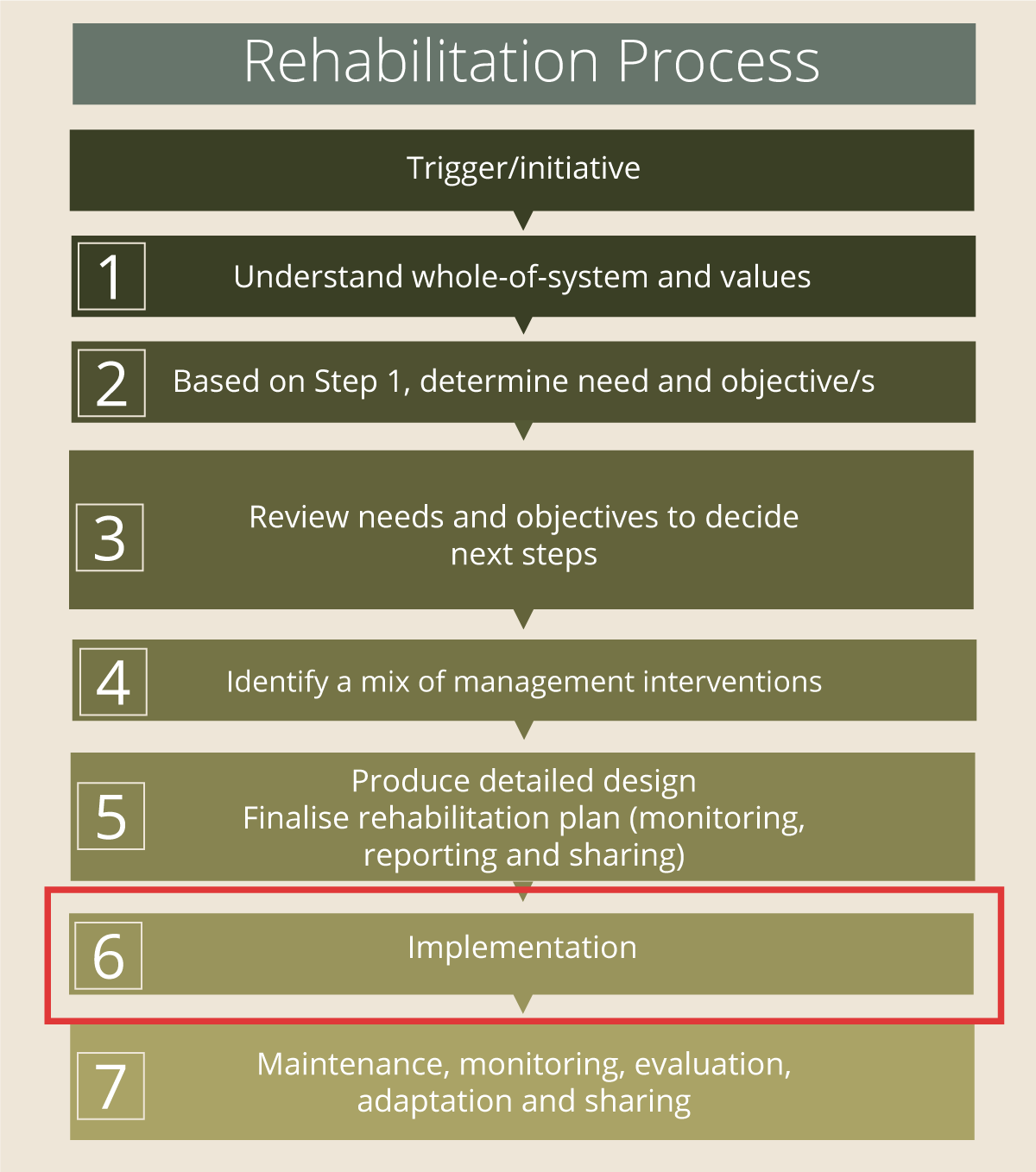|
|
Step 6: ImplementationThis step involves the implementation of the project designed in step 5, and can include on-ground works, applied research, engagement, education and awareness, applied research and monitoring (in accordance with the Condition Assessment Monitoring Plan - (CAMP)). Decisions now need to be made about the most effective way to implement the project. If the people who developed the detailed design are not those involved in the implementation there needs to be clear instructions provided, and a strategy in place for who to contact if further information is needed. Underlying considerationsA task plan may be needed to ensure everyone is aware of their roles and responsibilities. Engaging contractors with relevant experience can mean they are better informed of the risks and can help resolve any issues quickly, minimising downtime. Project managers should be onsite during implementation to induct and advise contractors. Access to the site for machinery and staff will need to be considered well before implementation begins on site. Expert oversight (such as in fauna, flora, hydrology etc.) may be required particularly where designs are amended during construction. For example, a fishway biologist should be on site during construction of a fishway to assess any changes to designs and provide quality control. Consideration must also be given to the biosecurity arrangements of the project. Work to remove invasive weeds should not introduce alternate threats or spread them to other sites. Before any works are undertaken, it is important to implement the CAMP and ensure a baseline condition assessment is undertaken if it has not been done in Step 2. This will enable the effectiveness of any changes to be evaluated. Once the site baseline condition has been recorded, any site preparations can then be undertaken. This may include soil improvement, plant removal, access, or contamination and waste disposal. The value of well planned before and after photographs should not be underestimated in community engagement and other forms of sharing. It is also a good idea to discuss with the community the likely changes that may occur, so that actions like vegetation removal or vehicle and pedestrian access impacts can be anticipated. It can be helpful to know how other rehabilitation projects have been implemented, especially similar actions or those in the local area. Look at rehabilitation projects implemented in Queensland on the project search tool.
Things to think about
Last updated: 30 June 2022 This page should be cited as: Department of Environment, Science and Innovation, Queensland (2022) Step 6: Implementation, WetlandInfo website, accessed 8 May 2025. Available at: https://wetlandinfo.des.qld.gov.au/wetlands/management/rehabilitation/rehab-process/step-6.html |

 — Department of the Environment, Tourism, Science and Innovation
— Department of the Environment, Tourism, Science and Innovation


